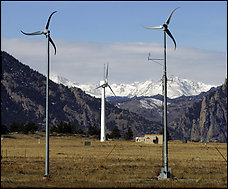Money is where the rubber of economic theory meets the road of mundane reality.
At once a tangible thing — be it paper, coins, checks, credit cards — money is also an abstraction, standing in for, representing all those goods and services we value.
Money is emblematic of the social contract — the often tacit arrangement whereby we live, the agreement we enter into as citizens of a nation, as members of a people, and made explicit in another, yet larger, set of abstractions which govern our lives, the law.
We are in the middle of a financial crisis and so these issues come to the fore.
Further urgency arises from the ongong environmental disasters that threaten to undo our civilization as a consequence of global warming.
The entire contract, I submit, is due to be renegotiated.
Like so many others around the world, I am deeply heartened by our recent election of a man who truly understands the magnitude of the problems before us.
As brilliantly capable as he clearly is, however, Obama is just one man and the issues before us are global in scale, requiring all who can to shoulder a share of the burden.
Having recognized the problems facing us, we have taken a crucial first step.
How best to proceed?
We need to put our heads together and pool our vast wealth of personal intelligence, talent, energy and expertise — and so achieve a consensus as to what our next steps must be.
So saying, I am offering a letter from an old friend whose wisdom I have often relied on, as a contribution to a truly planetary dialog already unfolding:
Yes, I am aware of the multiplier effect and I knew the use of statistics would be problematic for some, but I’ve always been an odd duck that likes to juxtapose emotional situations with empirical evidence and, conversely, “hard facts” with emotions. Regardless, my point is that I don’t think governmental fiscal policy should be used in a surgical manner to fix an immediate problem without considering the whole economy and the long-term first.
If we decide the problem with our economy is basically ‘how do we get people and goods from Point A to Point B,’ why not factor in the whole of the transportation sector? Wouldn’t a fiscal intervention program that is focused on a target model in (say) 30 years be more appropriate? Then we can look at the mix of known transportation networks (water, land and air) to begin a more comprehensive project. Regardless of how we feel about our auto industry (or France, its agricultural) maybe its time for an infusion of $50B into the light rail or steel industries instead. I believe that Americans also have emotional investments in those areas of manufacturing as well. Why fix the symptom before we have an opportunity to diagnose the disease?
On another note, I liked Clinton’s plan of somehow relaxing credit to allow more (marginal) families the opportunity to purchase homes in the late 1990’s; and Bush’s more deregulated banking, finance and insurance ideas, but the two didn’t work well in conjunction with one another. In Clinton’s case many of the marginal new property owners were our best renters. By removing the cream of the renters we undercut the small real estate investor. As it became harder to find solid renters many middle class investors moved back into the financial markets creating an overvalued bubble effect which will right itself. In Bush’s case the effective deregulation of the banking industry – through lax oversight, expansion of services offered by financial institutions and no push for stricter new regulations – allowed many to engage in “the bigger fool theory” that property values always rise.
Again, a longer term approach to what our objectives are might be helpful in aligning both fiscal and regulatory policy with the direction of the society. I’m beginning to feel as though “free markets” need to be constrained in economic and market terms as “free will” is constrained in spiritual and social terms.
From my simple perspective I note that in the last twenty years I have operated small businesses (we now have 32 employees) our insurance (50% is health care, 75% including workers compensation insurance) has risen from .5% to 3.5% of gross sales and our banking and finance charges have risen from .25% to 2.75%. On the national level health care has increased from 2% GDP to 15% GDP (not to be confused with health care insurance costs). I can only assume that Americans value our health 7.5 times as much as the generation before this. Are we willing to value it double within the next twenty years? Oops, there are those statistics again. At any rate, at what point do we stop looking for victims (sorry to you trial lawyers and malpractice insurance people) and start recognizing that we are mortal and that it is economically, socially and ethically detrimental to prolong life at every cost? What does the “the bigger fool theory” look like in the health care industry?







